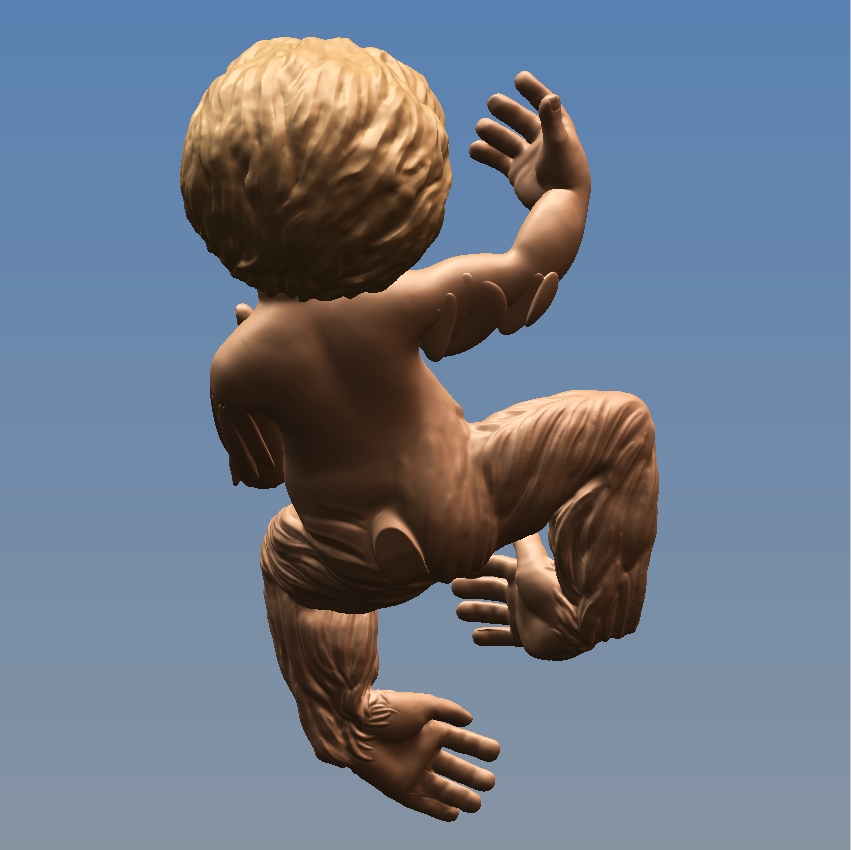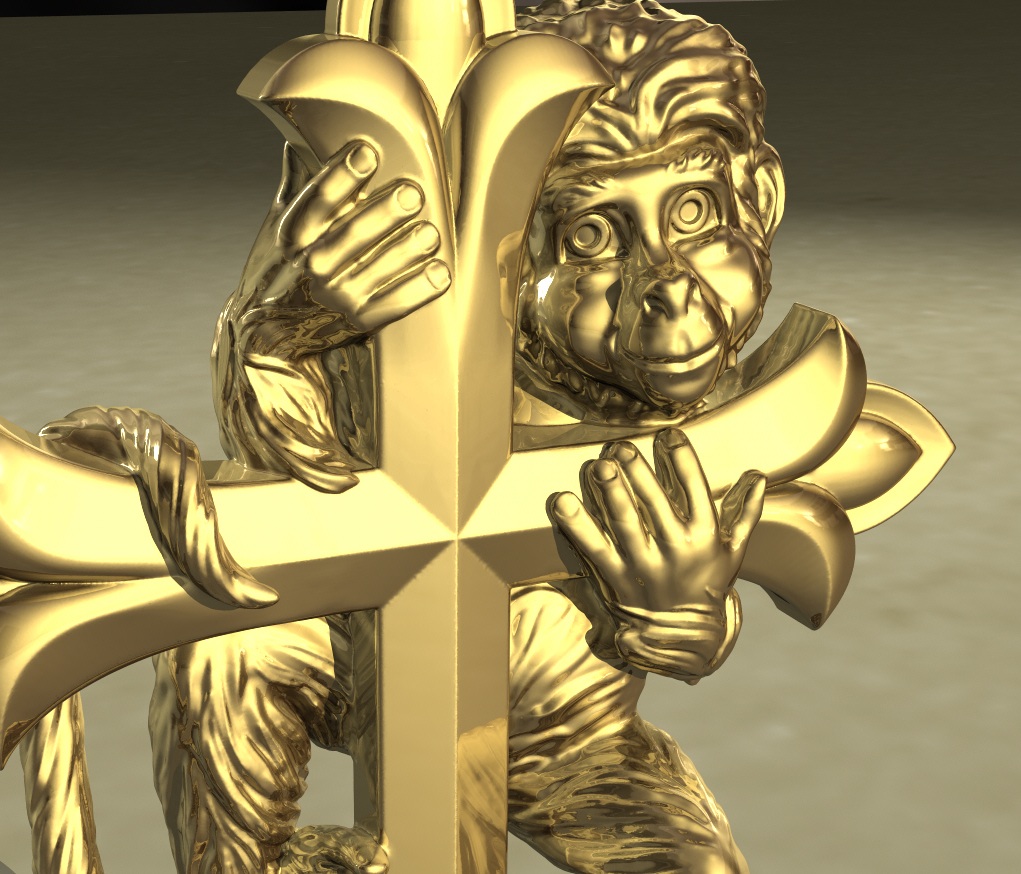The Spring of 2014 was a big one for me. After working sporadically for over a decade as a part-time adjunct professor, I had recently accepted an offer to become full-time faculty at F.I.T. I’d had my own design business for fifteen years, and spending my days in offices and hallways was a very different head-space. By April, I was half way through my second semester and just keeping my chin above water. Freelance work continued to eat my evenings and weekends, and I was hard at work in my studio when a call came in. The voice on the other end was brusque, jovial, and confident—and laden with hard New York consonants. He must’ve dropped his name in the first few minutes, but I was more interested in what he wanted me to do. He was a jeweler, and he wanted me to advise him on incorporating CAD technology with some of his product. He didn’t seem thrilled with the idea, but like many in the trade, he didn’t believe he could afford to avoid digital technology much longer. he’d heard I was the guy to talk to, and this was familiar enough ground for me; I’d played digital consultant to a number of manufacturers over the years. This guy loved to talk, and I was enjoying listening—he had interesting questions and didn’t hesitate to chime in with ideas of his own. But I was leery of staying on the phone (consulting is worthy of an invoice), so I agreed to drive from Long Island to his factory in New Jersey to meet him. The distance would normally have cooled my enthusiasm, but then I caught his name: Scott Kay. I’d been chatting it up with one of the most influential jewelry designers of the past thirty years!
Scott was a busy man when I arrived. He had me wait in a conference room where the walls were lined with glass cases featuring mostly bridal product. When Scott finally came in, I was struck by his height and energy—here was a force to be reckoned with! He spoke quickly while his expressive hands tried to keep up. He escorted me into his office, and he was fielded phone calls while I studied in the jewelry on his wrist and hands, as well as the impressive star of David pendant he around his neck. Between calls, we tried to talk about computers, but he was too interested in leather. He’d been studying braiding and weaving leather…not as an intellectual idea, but as a personal craft. He had books and magazines featuring saddlery and leather-craft strewn about, and when realized he was still too busy to speak, he sent me back into the conference room with a stack of them to study while I waited.
When he returned, Scott was more official, and we talked technology for nearly an hour. Decades before, Scott had apprenticed under Henry Dunay and had tremendous respect and affection for hand craftsmanship. He interest in digital technology was limited to projects where the advantages of the medium were indisputable. He gave me a tour of his facility and we discussed a couple of his upcoming series and how computer modeling might prove useful. We did have a slight disagreement. Scott insisted there were projects that were simply unsuitable for a computer. Anything sculptural for example, would be out of the question. But while I agreed there were a number of applications where digital technology was not the ideal approach—and that digital model-making wasn’t necessarily faster or cheaper than traditional methods, I argued that anything that could be executed by hand (excepting ultra-sensitive surface treatments such as super-fine engraving or granulation) could also be realized using a computer.
Scott sent me with a project to start with before passing me off on an assistant for a tour of his gallery space next door. The gallery space was impressive if eerie (it was a large space and there were only two of us there). The work was much different than the bridal product and more commercial mens’ silver pieces in the factory showroom. Here were fascinating tableaux that showcased inspirational items and collectibles alongside very personal jewelry pieces. It was a powerful and intimate experience.
I met with Scott a number of times through late summer of 2014, and while the contact was not extensive, it made a deep impression on me. I had spent twenty years designing jewelry professionally before meeting Scott, and I had come to admire my work for the same reason my clients did: I designed pretty pieces that sold well. I was an aesthetics machine. I understood that fine line between something most everyone would like and something that was interesting but not too interesting. I was confident and comfortable with this approach.
This was not Scott’s approach. What I saw from that first deep conversation about knotting leather, was that Scott was passionate about absolutely everything he did. Every Scott Kay piece came into being for a reason that was personal and relevant to Scott. And he could explain those attachments for any piece you asked him about…at length. Spirituality was a huge interest for Scott that summer. He was working on a line of religious product for Christian children, and he was passionate about every expression, detail, and finish. The amount of honest affection and meaning that imposing Jewish gentleman poured into whimsical silver pendants and charms changed how I viewed my profession. There is a higher standard than pretty that sells. Scott was also very proud of a silver pitbull ring he wore. He saw himself in the portrait it presented, and loved explaining the fine finishing work the piece demanded. (If you’ve never seen one of Scott’s animal rings in person, please try to do so; the images online cannot do justice to the craftsmanship.)
Scott’s first impact on my personal work was the incorporation of soft-surface CAD modeling. I wanted to prove to him that I could achieve a fully sculptural effect on the computer, and decided to model one of his children’s pieces featuring a young monkey. I tried my best to model the piece with hard-surface modeling, and while I believed I had fairly mastered Rhino, I met a wall that was forcing me to compromise. I knew Scott would not accept compromise.
So I began experimenting with various soft-surface sculpting packages and by summer’s end I was achieving credible results.
I’d told Scott I wanted to try and sculpt the figure, but he wasn’t expecting it when I cast the model in silver and presented it to him as a gift. I couldn’t say that it swayed his opinion on hand sculpted vs digitally sculpted models, but it confirmed mine: I was now fully confident that I could digitally model any design I could conceive. Id achieved complete creative control and freedom.
Another artifact from that summer of discovery, was my Hanuman ring. My meditation practice goes back more than thirty years, and I have always been intrigued by the idea of the “monkey mind” —that mischievous and persistent habit of my mind insisting that it’s me. In yogic lore, this monkey is often depicted as playful, almost cute, and there are similar representations of the Hindu god Hanuman. But my mind isn’t cute. My mind knows it’s me. It is King. It is in control. It is intimidating and harsh…and yet beautiful at the same time. I decided to combine these feelings into a personal talisman to remind me of this mind-centered facet of myself.
While the inspiration and aesthetic are unique and personal to me, the desire to express unique and personal ideas through jewelry is distinctly Scott Kay. It was his gift to me that summer.
As the summer drew to a close, Scott voiced an interest in having me join his team. I was tempted, but I had just gotten used to my new academic life at F.I.T. and was already obligated for at least the coming school year. We left the topic open. He’d become more intrigued by the potential of CAD, we’d been working together successfully for months, and there was no reason to expect that would end. Predictably, my teaching responsibilities quickly escalated, and my work with Scott tapered off. On Thursday, December 4, 2014, I heard that Scott had died of a heart attack. I was devastated. It’s hard to believe that someone I spent so little time working with could leave such a mark on me professionally and artistically, but I guess that’s Scott. His influence was permanent; one of those things I can’t unsee now that I’ve seen it. Every thing I design now has to have personal meaning, or it’s very difficult for me to maintain interest. I haven’t given up on pretty jewelry that sells. That’s important too and essential for success. But jewelry with heart is worth so much more.







